
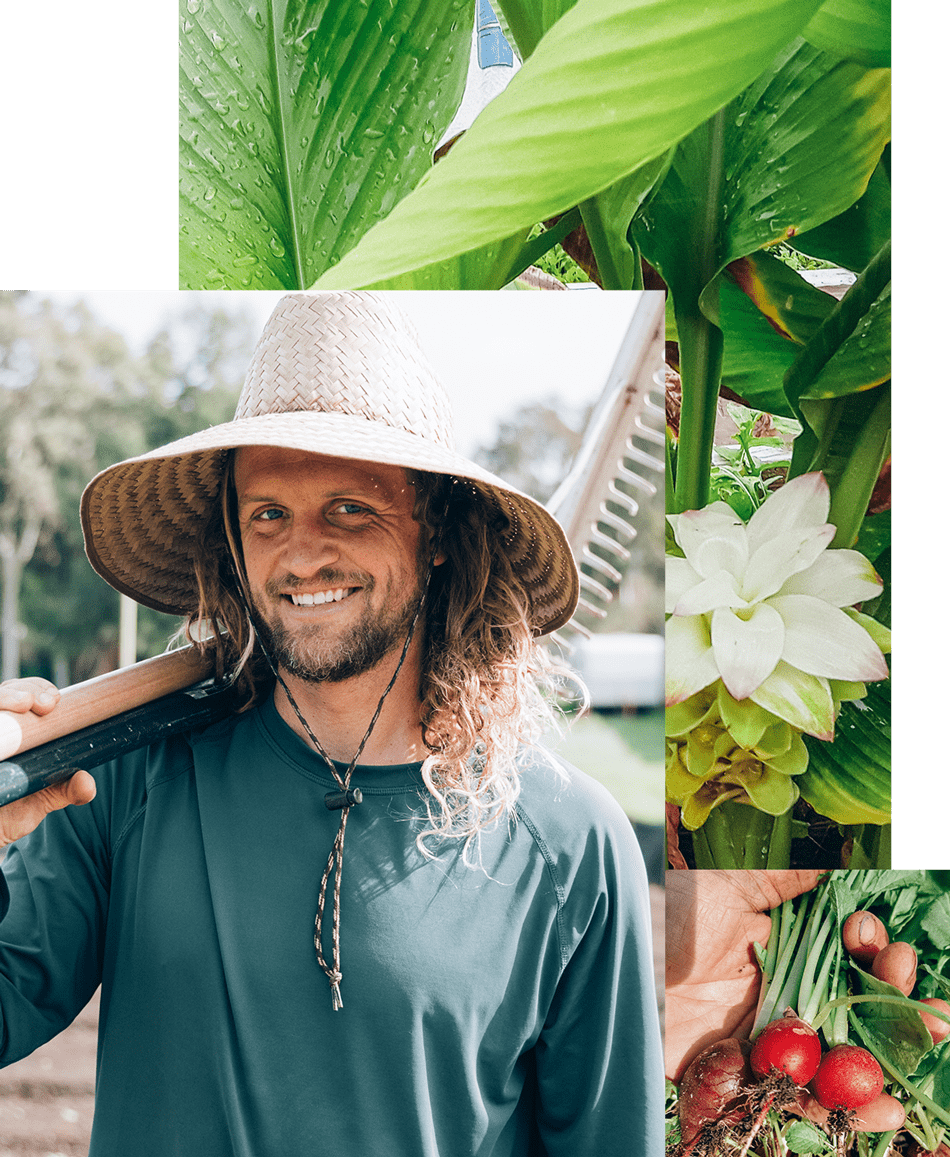
MEET A FARMER
GREG REESE
1000 Tiny Farms Movement
Encinitas, CA
A mix of sweat, dirt, and vibrant citrus filled the air. A young Greg Reese walked side by side with his Grandma on a hot summer day in California. One of his hands sandwiched in hers, the other outstretched as far as his fingertips would allow, just within reach to pluck a ripe lemon from the branch. The skin of the lemon under his fingernails as he peeled it open, the sharp spritz of citrus droplets riding his inhale like a roller coaster soaring down the track of his senses, waking up everything – this is the first memory Greg recalls experiencing food and joy as one in the same. That lemon tree still stands today as does the resonance of this moment that would become the foundation for what Greg would build and become.
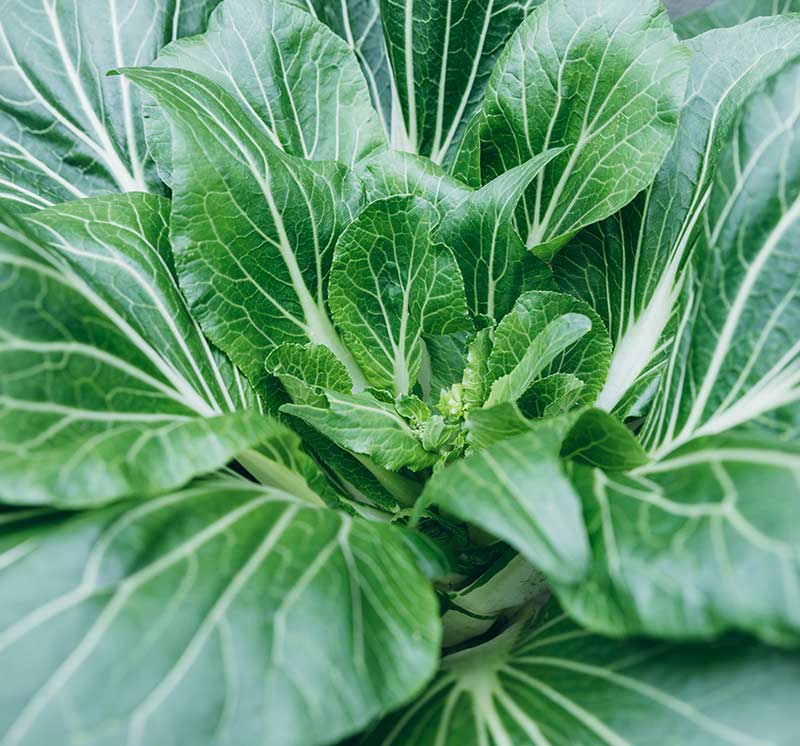

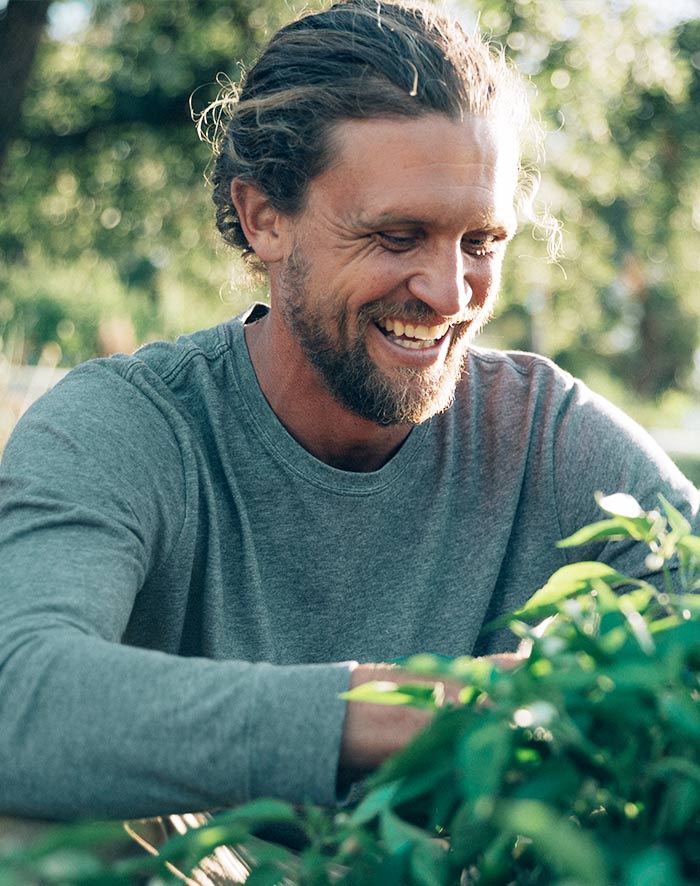
He didn’t know it at the time, but the restaurant sourced their produce from a local farm. It was just an ordinary day at work until Greg had his lunch break. He ordered a salad and the first bite immediately took him back to that day with his grandma. “It was alive with flavor and clean energy, I had never tasted anything like it.”
Greg’s mom didn’t cook many vegetables when he was growing up. “She was a meat and potatoes kind of woman. Iceberg lettuce and canned peaches were as close to fresh produce as it got. But when I tasted this salad, it was by far the freshest bite of food I had ever had. Local. Organic. Fresh. I’ll never forget it.”
He couldn’t stop thinking how a simple salad could make him feel so good. Growing food and the drive to recreate the taste of thriving produce took hold.
Greg’s roommate happened to be giving away a wooden bed frame. It was junk to him, but Greg saw a perfect grid for a garden. He filled it with soil, started to plant, and hasn’t stopped since.
The makeup of his day became a split screen of gardening and business school. As time went on, one began to feel more fulfilling than the other.
After mastering the intricacies of harvesting rainwater, much of which went to water orchards, gardens, and landscapes, Greg naturally found solace in being a land steward. He started to dream up a career in farming, albeit with skepticism if it could be a viable, rewarding, and joyful profession.
He chose to WWOOF (Worldwide Opportunities on Organic Farms) for a year on a tropical organic farm in Hawaii to see if he had romanticized the idea of farming, or it was something he could physically and financially thrive from. WWOOFing is a worldwide movement to link visitors with organic farmers, promote a cultural and educational exchange, and build a global community conscious of ecological farming and sustainability practices. WWOOFing started 50 years ago and has grown from a small group in the 1970’s to a worldwide community of hundreds of thousands of people today. It continues to be a great way for people wanting to gain farming experience to work on a farm, have the cost of room and board covered while bringing benefit to a farm and local community in need.

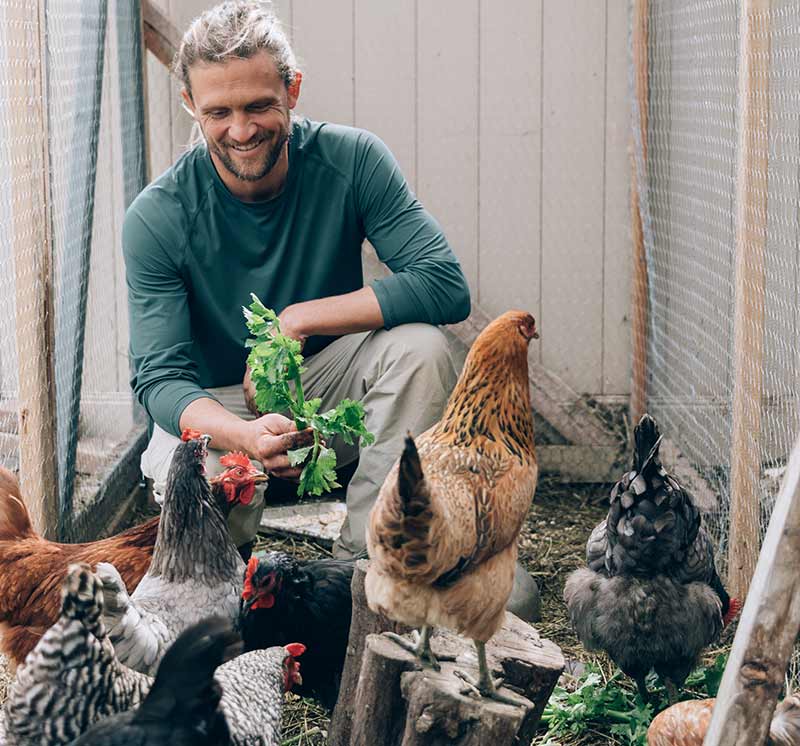

Greg received handfuls of technical experiences day in, day out which amounted to planting over 20 acres of cacao, coffee, and other tropical varieties of fruits and vegetables. This experience gave the gift of a new perspective – he finally saw where he could fit within the vast spectrum of agriculture – growing food was his calling.
Physical labor, being outdoors, digging hands in the soil, having access to the healthiest food, building systems that help the environment and the community hit all the marks for Greg. As Mark Twain famously said, “The two most important days in your life are the day you are born and the day you find out why.” This was that day for Greg.
Upon arrival back home, he was bright-eyed and excited to share what he’d learned and the passion he’d found with his friends and family. His Dad thought he was crazy. To bypass a business career for the fields, a cush corner-office for hard labor, seemed outlandish. But the pressure of parental expectations was no match for Greg’s newly founded confidence that this was the work he was meant to do.
The artful patchwork of many part-time jobs would amount to enough to keep doing the work he loved; setting up and transforming backyards into gardens, growing food for restaurants, and one job in particular brought with it the jubilee only kids can evoke: teaching gardening classes at a local school. He loved to watch the transformation of kids who were pent up in the classroom from the routine and screens find freedom in the garden.
“Is it ready yet? Is it ready yet? Is it ready yet? Is it ready yet?” This was how Greg was greeted each day – clusters of kids hovering around him yearning to know if the fruit was finally ready to pick or if the seeds they’d just planted just the day before were going to sprout.
While working with kids in the school gardens, Greg was also transforming yards into gardens. With the coined motive “grow food not lawns,”Greg saw how heavy water feeding backyard lawns were not a productive use of space. He worked with homeowners to incorporate edible landscapes and growing spaces. This hyper local act of equipping his community with the tools, skills, and infrastructure they need to sustain their own source of food helps to create a legacy that can be passed down for generations.
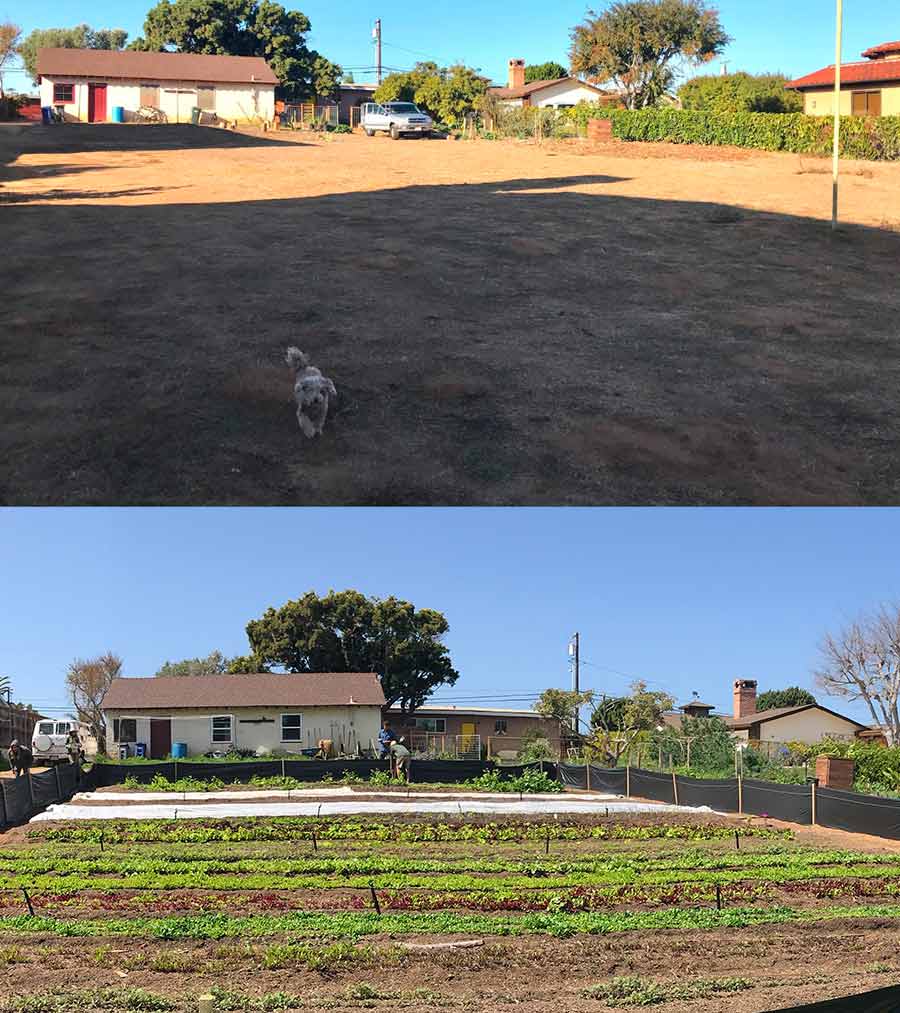
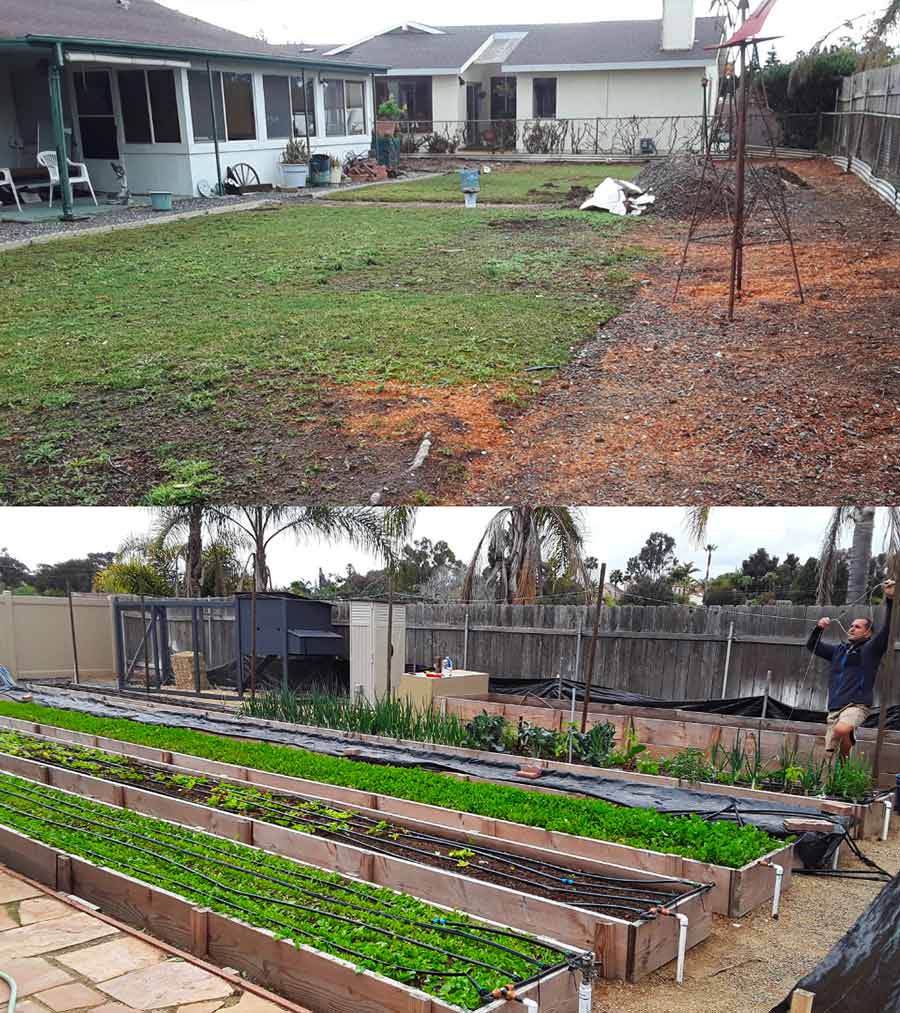
Greg valued the years of helping the younger generation build a relationship to the food they ate, installing home gardens to help families grow their own food, and establishing on site restaurant gardens for chefs, but it wasn’t enough. He was seeking more to scale up production and have a greater impact in the food system. Months before COVID-19 hit, Greg joined the farm crew at Sage Hill Ranch Gardens (SHRG) in Escondido, California – a no-till, ecological market garden to learn how to balance high production with ecological integrity. SHRG has a CSA program, supplies local markets, farmers markets, restaurants, and grocery stores with up to 100 different varieties of vegetables, interplanting, intercropping and high turnover.
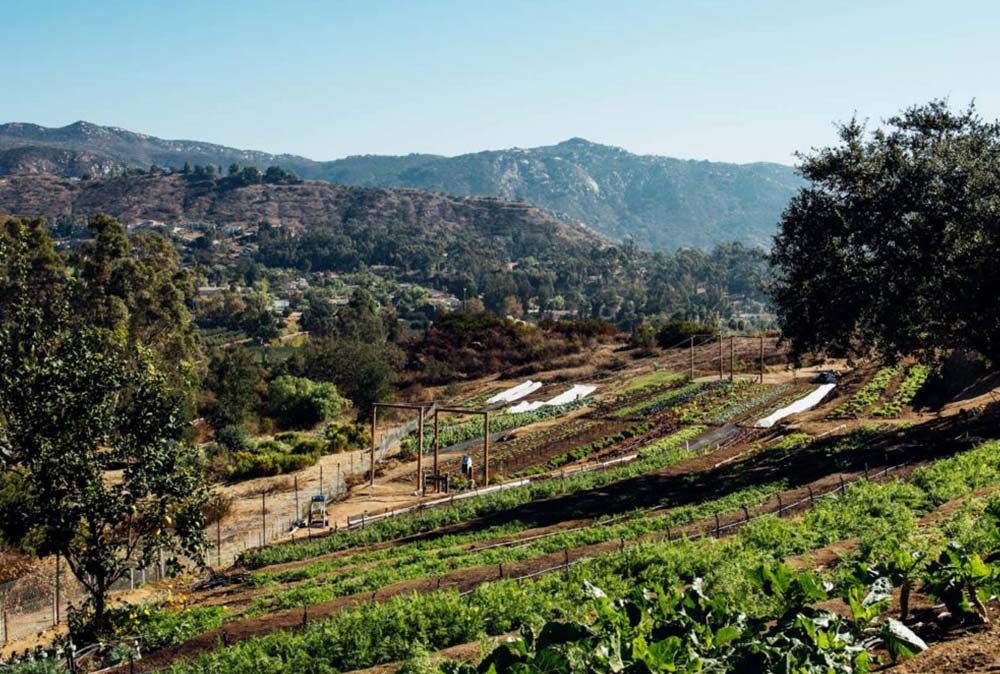
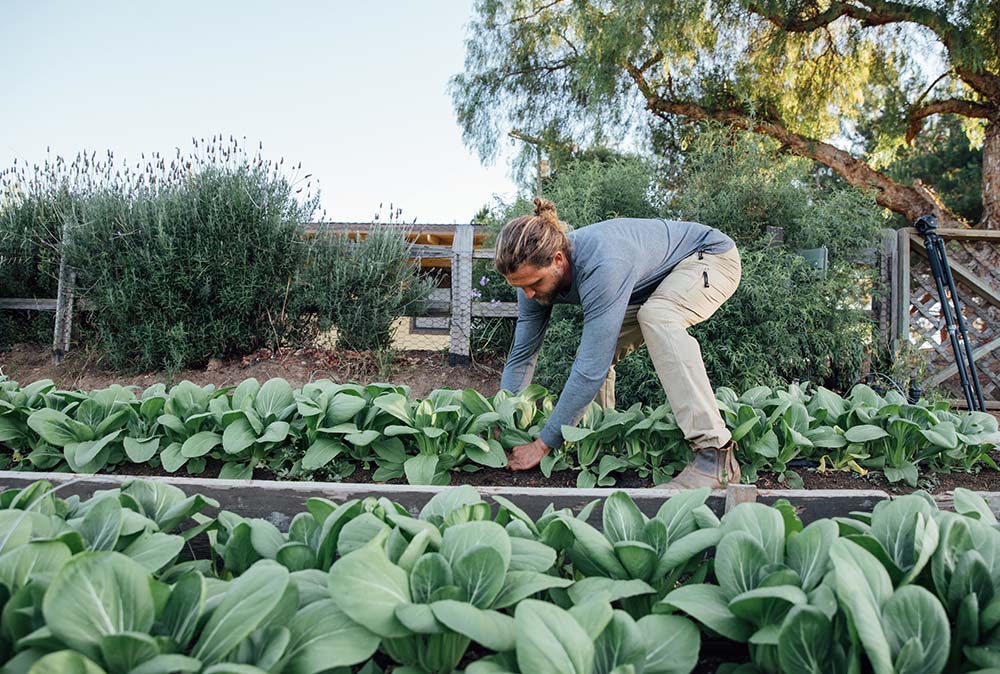
Sometimes purposeful work doesn’t come packaged in a single title, location or role. When you don’t grow up on a farm, the career track isn’t so clear for aspiring farmers. It’s harder to find mentorship, full-time work, land, and opportunity to pursue regenerative farming.
When we step back and look at farming as a profession, the average age of documented farmers is rising – currently 58 years old. It’s common to hear the perspective that younger generations aren’t interested, don’t want to do the labor that farming requires, but Greg sees it differently.
“There are real and perceived barriers for aspiring farmers. It’s not that the desire to farm isn’t there (in young people), it’s the roadblocks you run into that makes it seem impossible and most give up.”
I don’t have enough money to start a farm
I don’t know anything about farming or gardening
I didn’t grow up on a farm or ranch
Greg’s experience and vision challenges the idea that a farm needs to be thousands of acres on one plot of land. He wants anyone interested in farming to know not only is it possible, but it’s needed now more than ever.
COVID showed the world how critical small scale farms are when distribution, processing and packaging channels of conventional agriculture began to fail. In 2020, food could not get to the people which made me think, why don’t we just grow more food where the people are?
Greg’s reflection on hyper localizing a shared food system has turned into a movement he has coined as 1000 Tiny Farms. 1000 Tiny Farms is working to cultivate a regional network of market gardens to explore the social, environmental, and economic impacts of a small patch of land and the sharing of resources between farmers. The program sits under Sea + Soil, a wider non-profit collective Greg has co-founded with his partner and close friends. Sea + Soil is committed to reconnecting and regenerating ecosystems and community through education, storytelling, and earth stewardship.
“I want to see every town, state and region have it’s own 1000 Tiny Farms movement where people are growing their own food and connecting back to the land. A place where people aren’t only sharing resources, but knowledge, community and culture too.”
Currently, Greg is sowing this vision on multiple sites around San Diego, CA; ¼ acre in Carlsbad, 1/2 acre in Encinitas, and 20 acres of land in Bonsall, California (with Agrarian Craft) to test the model and measure the impact across the soil, farmers, and community. The first three of 1000 Tiny Farms are beginning there – where the isolating task of learning to become a farmer with a viable business becomes a communal endeavor.
Imagine a coalition of tiny farms that share and support each other to make high quality food accessible and affordable…
- ¼ acre – 5 acres, manageable in size
- Each plot growing nutrient dense food to supply to their own bioregion
- Shared farm tools + mobile washing and packaging stations
- Support for administrative resources and marketing
- A farmstand or retail outlet directly connecting to the local community without the middlemen in the supply chain eating profit margin
- An opportunity to re-acquaint people with how their food is grown, where they can feel the soil, inspect the operation, and shake hands with the farmer who stewarded the growth of the food they take home to their lunch boxes and dinner table
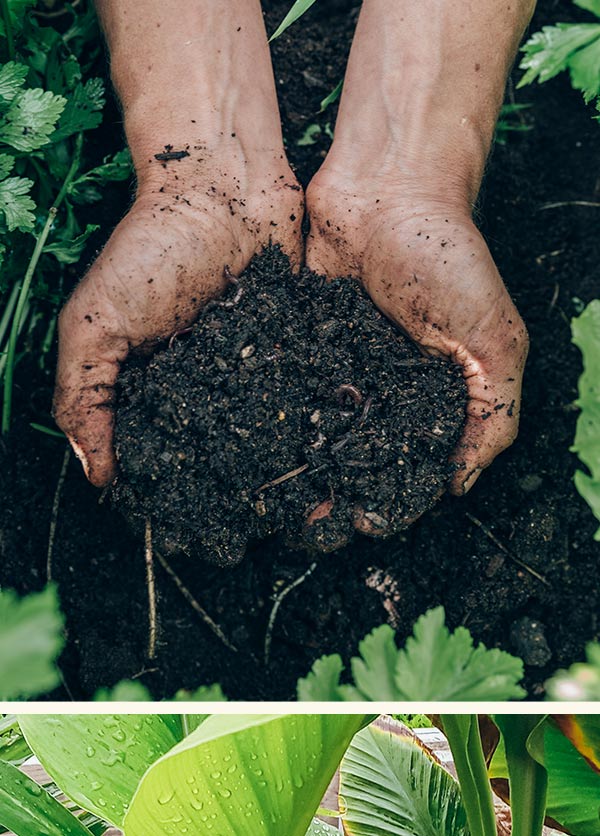


Greg is so passionate about this model because it makes land access affordable, creates jobs, connects farmers of all levels of experience to share knowledge, techniques and wisdom. It bridges the gap for those who didn’t grow up with a farming family, and most of all, it organically creates a community centered around the healthiest input for any community – food.
Farming has brought community into my life. Exchanging seeds, sharing cuttings, learning from others’ techniques, harvesting together, cooking together, eating together, and having conversations without screens is what we need right now. I really think it could change everything.
Whether it’s a backyard garden, 1/2 acre plot, 40 acres or more, Greg considers any place where you grow food, a farm. Each one deserving of every chance to succeed. And when multiplied, tiny becomes monumental. The bigger vision? A million 1000 Tiny Farms!
It started with a broken bed frame that became a garden and now it’s a tiny farm that can become 1000. Greg’s vision to make farming a communal experience that breaks down the barriers aspiring farmers are faced with, could change everything. We hope it does.
Support Greg’s
current projects:
Follow on Instagram:
Website:
Farmer’s Footprint Community: Farmside Chat
We are excited to welcome Greg Reese on Friday, March 26 at 12p PT / 3p ET for a webinar and live Q&A. Farmer Greg, as his friends call him, is a first generation farmer, co-founder of the nonprofit Sea + Soil, and creator of the 1,000 Tiny Farms program.
Ask A Farmer Series
We are thrilled to announce a bi-weekly appearance by Greg on our social media channels for our new “Ask A Farmer” series. Every other Friday Greg will lead an informational session plus a live Q&A to answer any questions you have about farming and gardening! Follow us @farmersfootprint to catch the kick-off session Friday, April 2nd on small scale farm and garden techniques…
